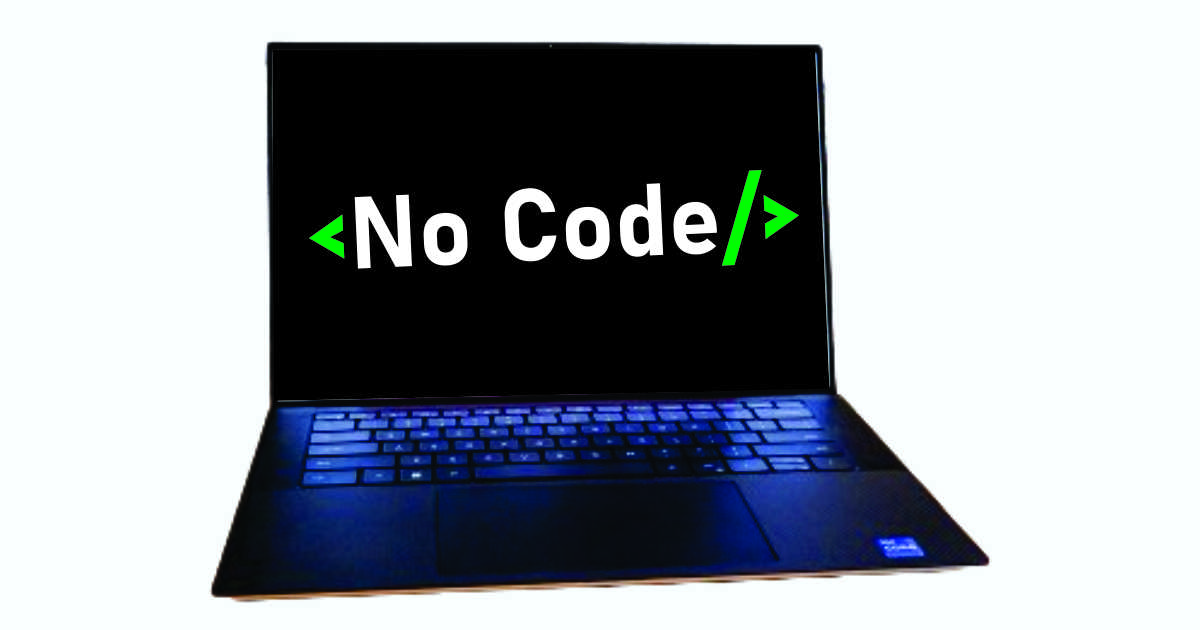The Future of Development is Here
 John Arufandika
John Arufandika
Believe it or not! The tech world is abuzz with a quiet revolution.
A real game-changer
It's not about a new programming language or hardware innovation, but a fundamental shift in who is building software. The rise of low-code and no-code platforms is democratizing development, putting the power of creation in the hands of more people than ever before.
Can I be honest with you? No code software development platforms are giving the power of development not only to tech-savvy people, but also to ordinary business users such as marketers, small business owners, and entrepreneurs who might know a different domain other than software development.
These innovative tools are democratizing software development, making it accessible to a broader audience beyond traditional developers. This blog post explores how low-code and no-code platforms are transforming the industry, empowering citizen developers, and driving digital transformation across various sectors.
What's the Big Deal?
Traditionally, software development was the exclusive domain of skilled coders, those who had years of training and a deep understanding of complex languages such as Java, Python, React, or C++ among others. Enter low-code and no-code software development platforms that have changed the game. They offer intuitive, visual interfaces where users can drag-and-drop components to build applications, often without writing a single line of code or needing to understand or know high-level programming languages.
This is a big deal for several reasons. Firstly low-code and no-code platforms are empowering citizen developers. Business users, domain experts, and even hobbyists can now bring their ideas to life without needing a computer science degree. This unleashes a wave of creativity and problem-solving from unexpected sources.
Secondly, projects that once took months or even years can now be completed in days or even hours. This speed is a game-changer for businesses that need to adapt quickly in today's fast-paced digital landscape.
Also, low-code and no-code platforms such as Webflow have lowered barriers to entry for startups to enter into the market with fully functional prototypes. Startups and small businesses can now build custom software solutions without breaking the bank on expensive development teams. This levels the playing field and fosters innovation.
Lastly, these intuitive platforms are bridging the skills gap. As the demand for software continues to outpace the supply of developers, low-code and no-code platforms offer a viable solution. They enable companies to tap into a wider talent pool and upskill their existing workforce.
What has been impact on the real world?
Well, the impact of low-code/no-code is already being felt across all industries. Using low-code and no-code platforms, you can build business applications such as a full e-commerce site, an enterprise application system, or a mobile application without knowing how to code. Yes, I mean it.
Here are a few examples of how the no-code platforms are changing the world.
● Healthcare: Hospitals are using no-code platforms to build patient portals and streamline appointment scheduling.
● Finance: Financial institutions are creating custom risk assessment tools and fraud detection systems.
● Education: Educators are building interactive learning modules and student engagement apps.
● Retail: Businesses are creating personalized e-commerce experiences and automating inventory management.
Is the Future is Codeless?
While low-code and no-code are not a silver magic bullet for every development need, (complex projects still require expert coders), their influence is undeniable. Without a doubt, low-code and no-code frameworks are expanding the definition of "Developer". The lines between IT and business are blurring as more employees become citizen developers. Not only that the frameworks are also fostering a culture of innovation as companies are embracing experimentation and rapid prototyping, leading to faster time-to-market for new ideas. And again these innovative tools are driving digital transformation. Organizations are using these tools to digitize processes and improve customer experiences at an unprecedented pace.
What's Next?
As low-code and no-code platforms continue to evolve, we can expect even more powerful features, seamless integrations, and wider adoption. The democratization of development is here to stay, and it's changing the tech landscape in profound ways.
About the Author
As a seasoned and passionate Full Stack Digital Marketing Technologist, John Arufandika has a knack for digital-driven results and brings a comprehensive toolbox to the table. From weaving data-driven strategies into engaging online experiences, front-end website design, back-end data analysis, and everything in between, John is a true digital marketing polymath. He is well-versed in the latest marketing technologies and trends, with a passion for staying ahead of the curve in the ever-evolving digital landscape. He combines his love for storytelling with SEO smarts and campaign know-how to supercharge website traffic and engagement.
Subscribe to my newsletter
Read articles from John Arufandika directly inside your inbox. Subscribe to the newsletter, and don't miss out.
Written by

John Arufandika
John Arufandika
As a seasoned and passionate Full Stack Digital Marketing Technologist, John Arufandika has a knack for digital-driven results and brings a comprehensive toolbox to the table. From weaving data-driven strategies into engaging online experiences, front-end website design, back-end data analysis, and everything in between, John is a true digital marketing polymath. He is well-versed in the latest marketing technologies and trends, with a passion for staying ahead of the curve in the ever-evolving digital landscape. He combines his love for storytelling with SEO smarts and campaign know-how to supercharge website traffic and engagement.